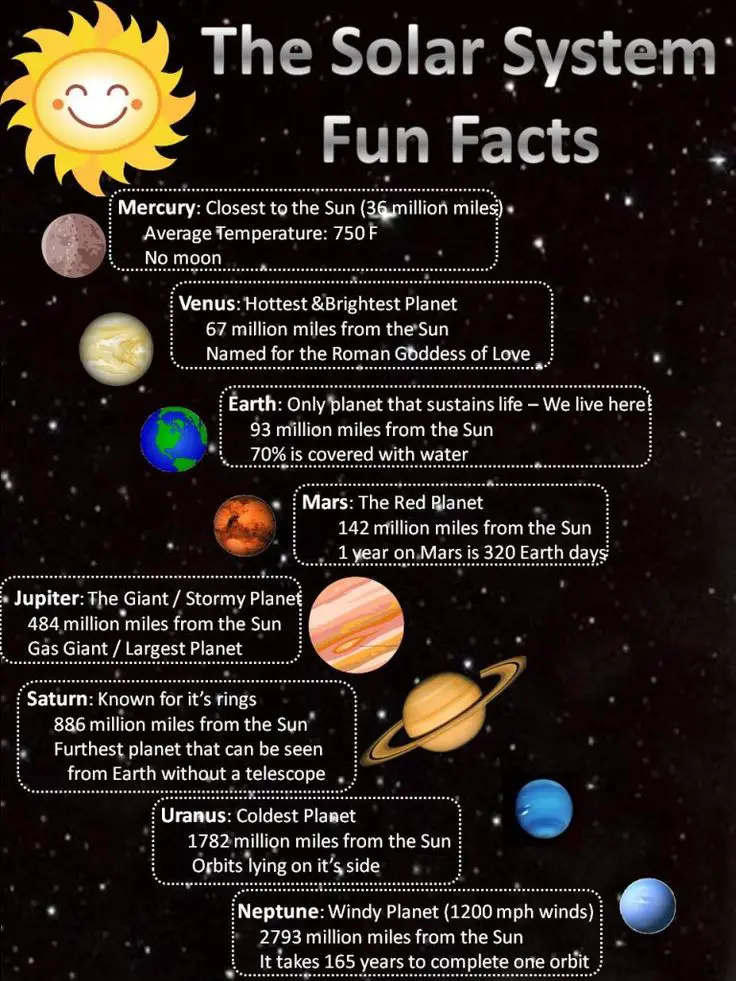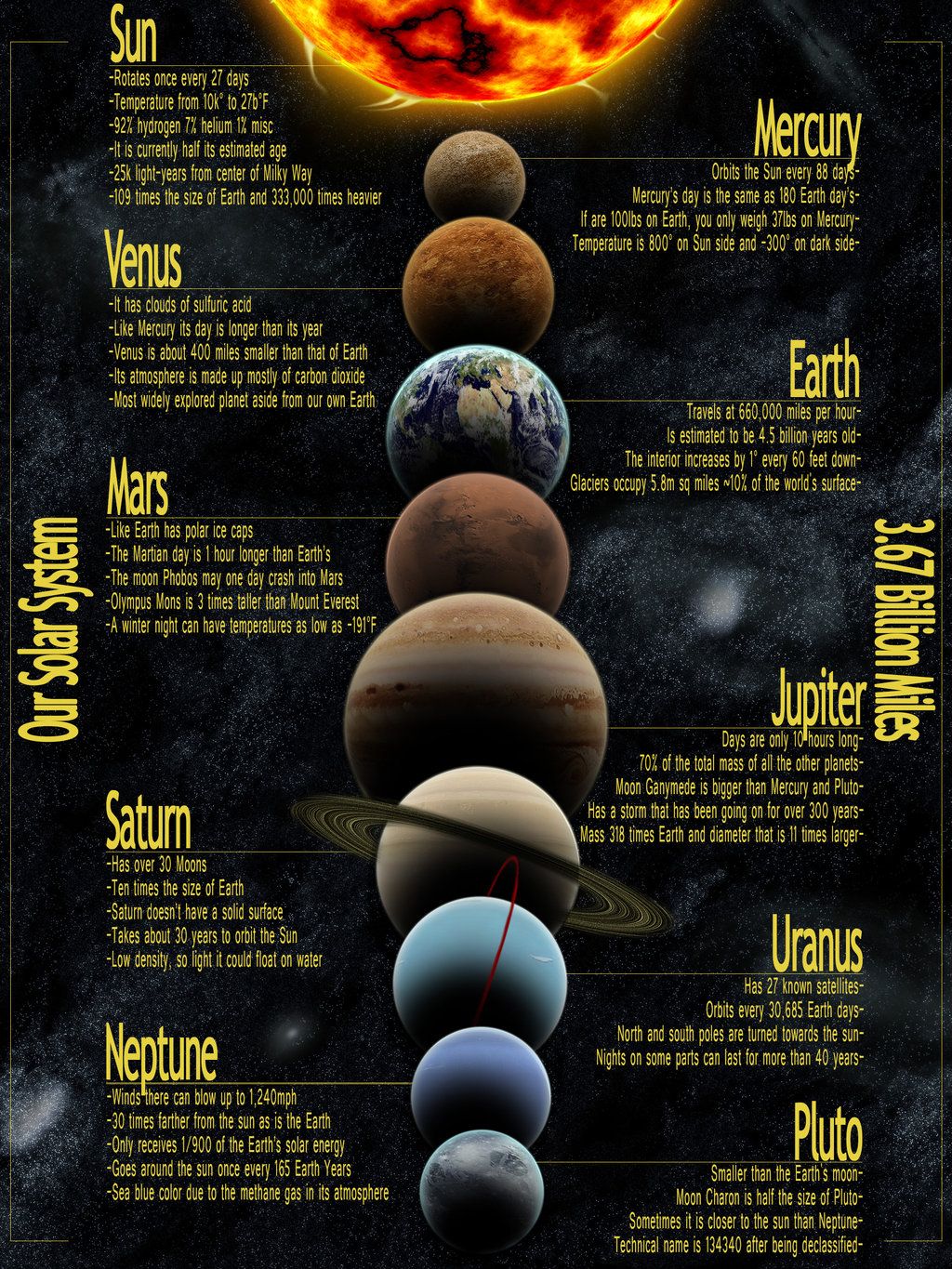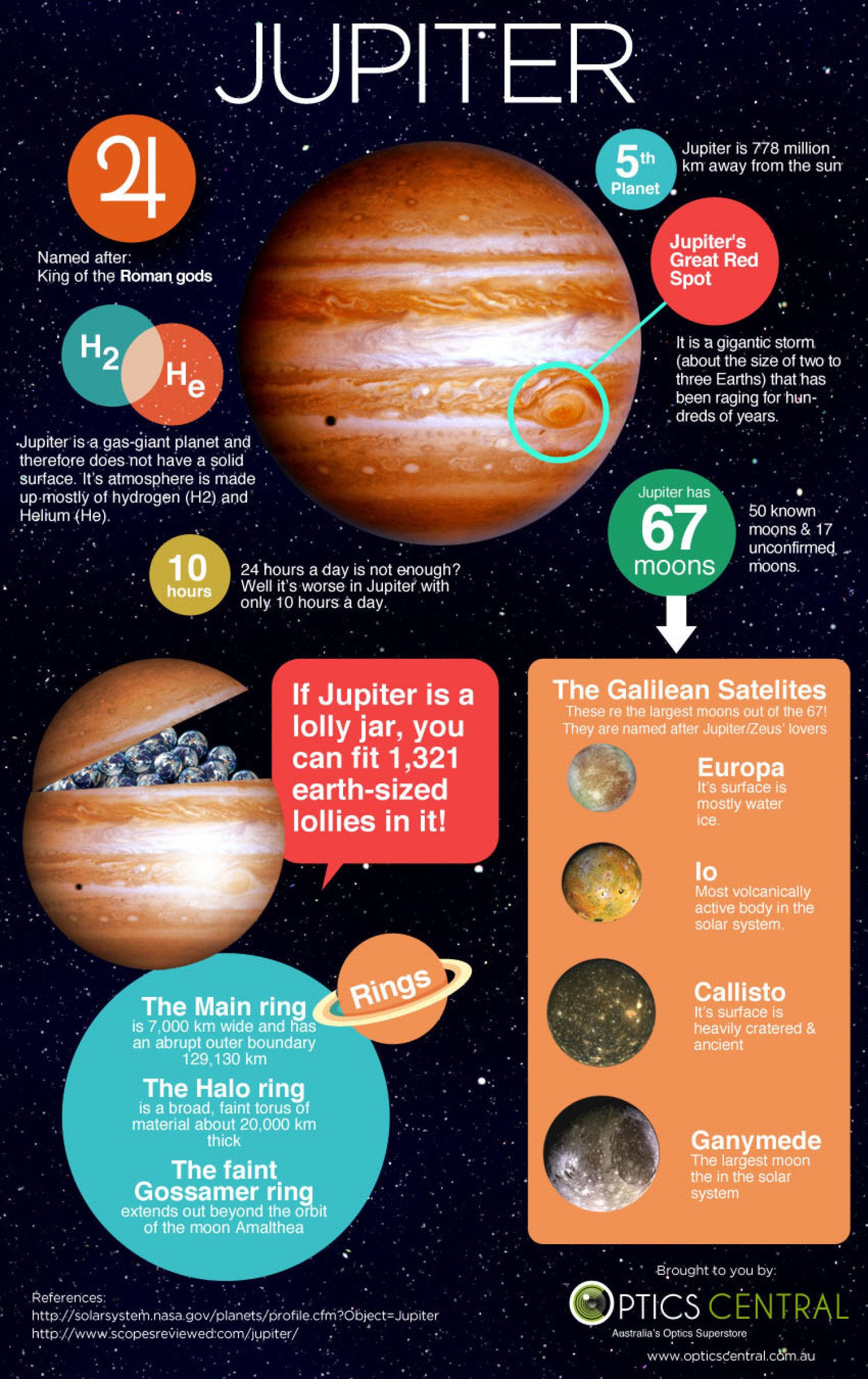Mercury Is Still Shrinking
Mercury is already the smallest planet in the solar system , and the second-densest after Earth. And it’s only getting smaller and denser.
For many years, scientists believed that Earth was the only tectonically active planet in the solar system. That changed after the Mercury Surface, Space Environment, Geochemistry and Ranging spacecraft did the first orbital mission at Mercury, mapping the entire planet in high definition and getting a look at the features on its surface.
In 2016, data from MESSENGER revealed cliff-like landforms known as fault scarps. Because the fault scarps are relatively small, scientists are sure that they weren’t created that long ago and that the planet is still contracting 4.5 billion years after the solar system was formed.
Saturn’s Rings Are 90% Water
NASA
Saturn is home to the Solar Systems most epic ice rink. Being so far from the Sun, the water in its rings is frozen into ice. It is one of four planets that have rings around them – the other gas planets do too. However, the rest were undiscovered until the 1970s when probes went to explore them. Saturns were the first rings seen through telescopes from Earth.
How The Objects In The Solar System Interact
All objects in the Solar System orbit the Sun that is, they move around the Sun in elliptical paths. Moreover, the orbits of these objects lie roughly in the same plane, called the ecliptic plane. They also orbit in the same direction.
The mechanism that causes the orbit of objects in the Solar System is one of the fundamental forces in nature: gravity. While the natural tendency for objects in the Solar System is to continue in a straight line of motion, the Sun exerts a force on each object and therefore bends the straight path into a curved one.
Additionally, other objects in the Solar System are massive enough to exert gravitational forces significant enough to alter the orbit of smaller objects. For example, the Earths gravity is strong enough to keep the Moon in orbit around the Earth.
Also Check: What Is The Best Battery For Solar Power
Two Of Saturn’s Moon Have Water
Saturn‘s moon Enceladus has an entire ocean made up of salt water. In 2018, researchers found complex organic molecules on Enceladus, which is a sign that it potentially could contain lifeâor not. Thatâs why there are proposals to send a mission there to find out.
Saturn has a second moon with water: Titan, which also has carbon-containing chemicals, another promising sign for life. Any place that has both water and carbon-containing chemicals is tantalizing to researchers looking for life in other places out in space.
Why Is Pluto Not A Planet

Pluto, once considered the ninth planet in the solar system, was reclassified as a dwarf planet in 2006 because it failed to meet one of the criteria in the definition of a planet. The International Astronomical Union defines a planet as a celestial body that orbits the sun, has enough gravity to pull itself into a round or almost-round shape, and has cleared the neighborhood around its orbit. Pluto has not cleared the neighborhood around its orbit, so it’s not considered a planet.
Some astronomers believe this reclassification is unfair and that Pluto should be reinstated as the ninth planet in the solar system. Looking at the historical literature, Philip Metzger, a planetary scientist at the University of Central Florida, found that before the 2006 decision the “clearing the neighborhood” rule appeared only in a single 1801 paper. He and his colleagues concluded that this Pluto-excluding rule is “arbitrary and not based on historical precedent,” Live Science previously reported, and that therefore Pluto should still be considered a planet.
Pluto, which is named after the Roman god of the underworld, sits in the vast Kuiper Belt, a region beyond Neptune that contains trillions of icy objects.
Read Also: Where Can I Buy Solar Cells
Saturn Is Not The Only Planet To Have Rings
Gas giant Saturn has a beautiful ring system which consists of small ice dust particles. You might be pleased to know, that other giants in our Solar system Jupiter, Uranus and Neptune also have rings of their own.
Jupiter has four sets of rings compared to Saturn which has as much as 30 sets of rings. Rings of Jupiter were discovered by Voyager 1 spacecraft when it passed by Jupiter in 1979.
Next on our list is Uranus with two sets of rings that were discovered in 1977. They consist of nine inner rings and two outer rings.
Our last giant Neptune has five rings which were first discovered in 1984. Neptune also has a faint unnamed ring coincident with the orbit of the moon Galatea.
There Are Millions Of Asteroids In The Main Asteroid Belt Between Mars And Jupiter
They can range from less than 33 feet to 329 miles long. But NASA keeps an ongoing list of asteroids with the potential to hit Earth in the next century along with the probabilities of that happening. Theyâre keeping a list because they donât wanna miss a thing ⦠and by a thing, we mean an asteroid.
Recommended Reading: Is Solar Worth It In Florida
The World Is Currently Searching For A New Ninth Planet In Our Solar System
Obviously, poor tiny Pluto was bumped down to a dwarf planet.
However, a search for a yet-to-be-discovered ninth planet is happening right now.
In fact, NASA has even enlisted the general publics help in the search.
Based purely on mathematical predictions and odd orbits of distant objects, a ninth planet has been theorized.
Thought to be around 10 times Earths mass and orbiting beyond Neptune, the mysterious planet is among astronomys biggest focuses.
A Day On Venus Last Longer Than A Year
Venus has some other unique features that sets it apart from other planets in our Solar system. Besides being the hottest planet, it rotates in the opposite direction to the Sun and does so very slowly.
It takes 243 Earth days for Venus to rotate on its axis and just 225 Earth days to orbit the Sun. Thus, a one full day on Venus lasts longer than one full year.
Recommended Reading: How To Get A Sole Proprietorship In Illinois
Presence Of Life On The Planets
As we know, Earth is the only planet with alive creatures. Other known planets are not fit for life. Some of them are too hot, and others are too cold. Finally, there is not enough air.
Some scientists suggest that there may have been alive creatures on Mars many years ago. As they think that Mars earlier was warmer, and there may have been more air. They seek tracks of leaving creations on Mars.
Besides, as the Universe contains billions of galaxies, scientists believe that there may be living somewhere in the Universe. Who knows, maybe some alien kid on the other part of the Universe is studying his planetary system right now. And he may even wonder if there is life in a galaxy far, far away.
There Are Mountains On Pluto
Pluto is a tiny world at the edge of the solar system, so scientists assumed the dwarf planet would have a fairly uniform, crater-pocked environment. That changed when NASA’s New Horizons spacecraft flew by in 2015, sending back pictures that altered our view of Pluto forever.
Pluto’s observed atmosphere broke all the predictions. Scientists saw the unexpected haze extending as high as 1,000 miles , rising higher above the surface than the atmosphere on Earth. As data from NASA’s New Horizons mission flowed in, scientists analyzed the haze and discovered some surprises there, too.
Scientists found about 20 layers in Pluto’s atmosphere that are both cooler and more compact than expected. This affects calculations for how quickly Pluto loses its nitrogen-rich atmosphere to space. NASA’s New Horizons team found that tons of nitrogen gas escape the dwarf planet by the hour, but somehow Pluto can constantly resupply that lost nitrogen. The dwarf planet is likely creating more of it through geological activity.
Read Also: How Much Power Will A 10kw Solar System Produce
Uranus Rotates On Its Side
The Earths axis is tilted by a reasonable 23 degrees, this is just enough to make things interesting. The tilt gives us our seasons in the Northern and Southern hemispheres. However, compared to Uranus, Earths tilt is paltry. Uranus axis is tilted by a staggering 98 degrees and literally spins on its side.
None of the other planets have such a pronounced tilt. It is thought that perhaps Uranus suffered a cataclysmic impact in the past, which knocked it onto its side. Voyager 2 is the only spacecraft that has ever flown past Uranus, so perhaps its time we sent another probe out there to take a closer look!
Weird And Wild Solar System Facts

There are so many interesting solar system facts, here are some of our favorites.
With so many interesting solar system facts, we’ve narrowed them down to 25 of our favorites.
Our solar system consists of the sun and everything that orbits that sun, like the eight planets we all know from elementary school. But the main planets, as diverse and fascinating as they are, are just the beginning. Earth‘s neighbors in space include comets, asteroids, dwarf planets, mysterious moons and a host of strange phenomena that are so out-of-this-world they elude explanation.
Scientists have discovered ice-spewing volcanoes on Pluto, while is home to a truly “grand” canyon the size of the United States. There may even be a giant, undiscovered planet lurking somewhere beyond Neptune. Read on for some of the strangest facts about the solar system.
Also Check: How Much Power Will Solar Panel Generate
At Times You Can See Venus With The Naked Eye
Venus is the brightest planet in the solar system due to the yellow clouds made of sulfuric acid that work to reflect the suns light. If you know where to look you can sometimes see Venus with the naked eye.
This has been the first camp ever that my son didnt complain about going in the morning, but he did tell me about the friends he made and the things he did. We love this camp!
We are really happy with Camp Live Oak and our daughter Georgia cant wait for Winter Session!
Loved the fact that the camp worked with me and kept my son very active every day. He definitely wasnt bored.
ACA Accredited
There Is A Huge Difference Between The Volcanoes Of Earth And Others
when we think of volcano an imagination comes to mind of a mountain from which Lava is flowing.
Can you think volcano without lava you will say no but volcano forms when the underground reservoir of a hot fluid mineral or gas erupts onto the surface?
But the exact composition can differ much the volcanoes of Jupiters moon appear to be composed of sulphur and on Saturn and Neptune moon the volcano erupts when old and frozen H2O water expands when it freezes and enormous pressure can build, same when normal Volcano erupts.
I hope you are enjoying facts about solar system if yes then please comment below.
In one of my page, I also tell about me and my site you can also read it.
You May Like: Is An Inc A Sole Proprietorship
Spacecraft Have Visited Every Planet
We’ve been exploring space for more than 60 years, and have been lucky enough to get close-up pictures of dozens of celestial objects. Most notably, we’ve sent spacecraft to all of the planets in our solar system Mercury, Venus, Earth, Mars, Jupiter, Saturn, Uranus and Neptune as well as two dwarf planets, Pluto and Ceres.
The bulk of the flybys came from NASA’s Voyager 1 and Voyager 2, which left Earth more than four decades ago and are still transmitting data from interstellar space. Between them, the Voyagers clocked visits to Jupiter, Saturn, Uranus and Neptune, thanks to an opportune alignment of the outer planets.
Earth Has A Very Unique Chemical Composition
Planet earth is made up of iron, oxygen, silicon, sulfur, magnesium, sodium, nickel, calcium, and aluminum. While all of these elements are found on other planets they are only found in trace amounts. The majority of elements found on other planets are helium and hydrogen. On the contrary, 90% of Earth is made up of iron, oxygen, silicon and magnesium.
Don’t Miss: How To Calculate How Much Solar Panels You Need
Jupiter Is Earths Hero
It is believed by many scientists that Jupiter has probably saved the Earth from certain destruction by comets several times throughout history. A comet discovered in 1770 was headed straight for Earth but never hit. Another comet discovered by Pierre-simon Laplace was headed towards Earth, but was sucked into Jupiters gravitational field. This probably happened in 1770 as well, and chances are similar events have taken place at plenty of other times.
Earth’s Van Allen Belts Are More Bizarre Than Expected
Earth has several bands of magnetically trapped, highly energetic charged particles surrounding our planet, known as the Van Allen belts While we’ve known about the belts since the dawn of the space age, the Van Allen Probes have provided our best-ever view of them. They’ve uncovered quite a few surprises along the way.
We now know that the belts expand and contract according to solar activity. Sometimes the belts are very distinct from one another, and sometimes they swell into one massive unit. An extra radiation belt was spotted in 2013. Understanding these belts helps scientists make better predictions about space weather or solar storms.
You May Like: Is Solar Really Worth It
Year On Earth And Other Planets
Did you know that our concept of time is quite subjective? Planets take different amounts of time to orbit the Sun. We call this time a year. One year variously lasts on other planets, and this is extremely interesting!
A year on Earth lasts approximately 365 days. It is the amount of time that Earth needs to travel around the Sun one time. But it is not pretty precise. Earth takes about 365 days and approximately 6 hours to circle the Sun. That is why we have one extra day every four years and call it a leap year.
How long lasts a year on other planets? It depends on where they are orbiting. The closest planets to the Sun orbit around it faster due to the Suns gravity, which is much powerful:
Magnetic Field And Magnetosphere

Despite its small size and slow 59-day-long rotation, Mercury has a significant, and apparently global, . According to measurements taken by , it is about 1.1% the strength of Earth’s. The magnetic-field strength at Mercury’s equator is about 300 . Like that of Earth, Mercury’s magnetic field is . Unlike Earth’s, Mercury’s poles are nearly aligned with the planet’s spin axis. Measurements from both the and MESSENGER space probes have indicated that the strength and shape of the magnetic field are stable.
It is likely that this magnetic field is generated by a effect, in a manner similar to the magnetic field of Earth. This dynamo effect would result from the circulation of the planet’s iron-rich liquid core. Particularly strong effects caused by the planet’s high orbital eccentricity would serve to keep part of the core in the liquid state necessary for this dynamo effect.
Mercury’s magnetic field is strong enough to deflect the solar wind around the planet, creating a magnetosphere. The planet’s magnetosphere, though small enough to fit within Earth, is strong enough to trap solar wind . This contributes to the space weathering of the planet’s surface. Observations taken by the spacecraft detected this low energy plasma in the magnetosphere of the planet’s nightside. Bursts of energetic particles in the planet’s magnetotail indicate a dynamic quality to the planet’s magnetosphere.
Read Also: How To Assemble Solar Panel
Scientists Predict There Is An Entire Planet That Is Of A Diamond
when we hear the word diamond what comes to your mind the most expensive, shining and found in very low quantity but when you hear this it means all your diamond view is completely wrong.
Researches out of University identify a rocky planet 55 cacrie that appears of graphite and diamond the most interesting thing is that its twice the radius of Earth and 8 times more than mass.
Recommend article- 10 Amazing facts about Mars
Spacecraft Could Bring Contaminants To Inhabitable Locations In The Solar System
So far, scientists have found no evidence that life exists elsewhere in the solar system. But as we learn more about how “extreme” microbes live in underwater volcanic vents or frozen environments, more possibilities open up for where they could live on other planets.
Microbial life is now considered likely enough on Mars that scientists take special precautions to sterilize spacecraft headed to the planet. NASA chose to crash its Galileo spacecraft into Jupiter rather than risk it contaminating the potentially habitable oceans of Europa.
You May Like: How Much Energy Does Tesla Solar Roof Produce
